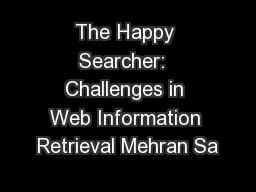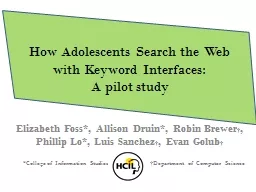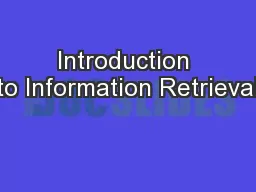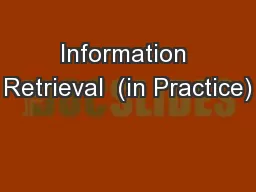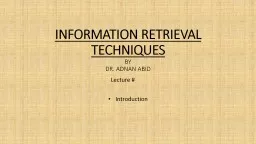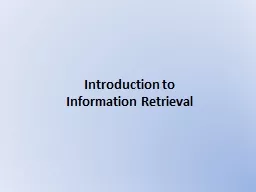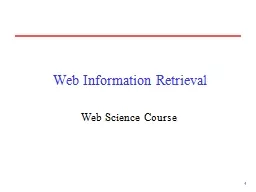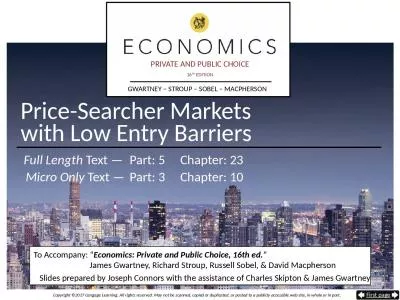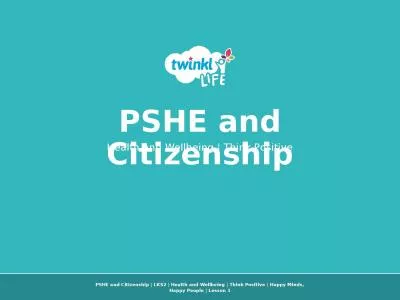PDF-The Happy Searcher: Challenges in Web Information Retrieval Mehran Sa
Author : ellena-manuel | Published Date : 2017-11-28
Mehran Sahami et al Section 4 deals with the retrieval of UseNet newsgroups postings while Section 5 addresses the retrieval of nontextual objects such as images
Presentation Embed Code
Download Presentation
Download Presentation The PPT/PDF document "The Happy Searcher: Challenges in Web I..." is the property of its rightful owner. Permission is granted to download and print the materials on this website for personal, non-commercial use only, and to display it on your personal computer provided you do not modify the materials and that you retain all copyright notices contained in the materials. By downloading content from our website, you accept the terms of this agreement.
The Happy Searcher: Challenges in Web Information Retrieval Mehran Sa: Transcript
Download Rules Of Document
"The Happy Searcher: Challenges in Web Information Retrieval Mehran Sa"The content belongs to its owner. You may download and print it for personal use, without modification, and keep all copyright notices. By downloading, you agree to these terms.
Related Documents

